Susan Kouguell speaks with Academy Award-nominated producer Rosalie Varda about her new documentary film “Varda by Agnès” and collaborating with her mother Agnès Varda.
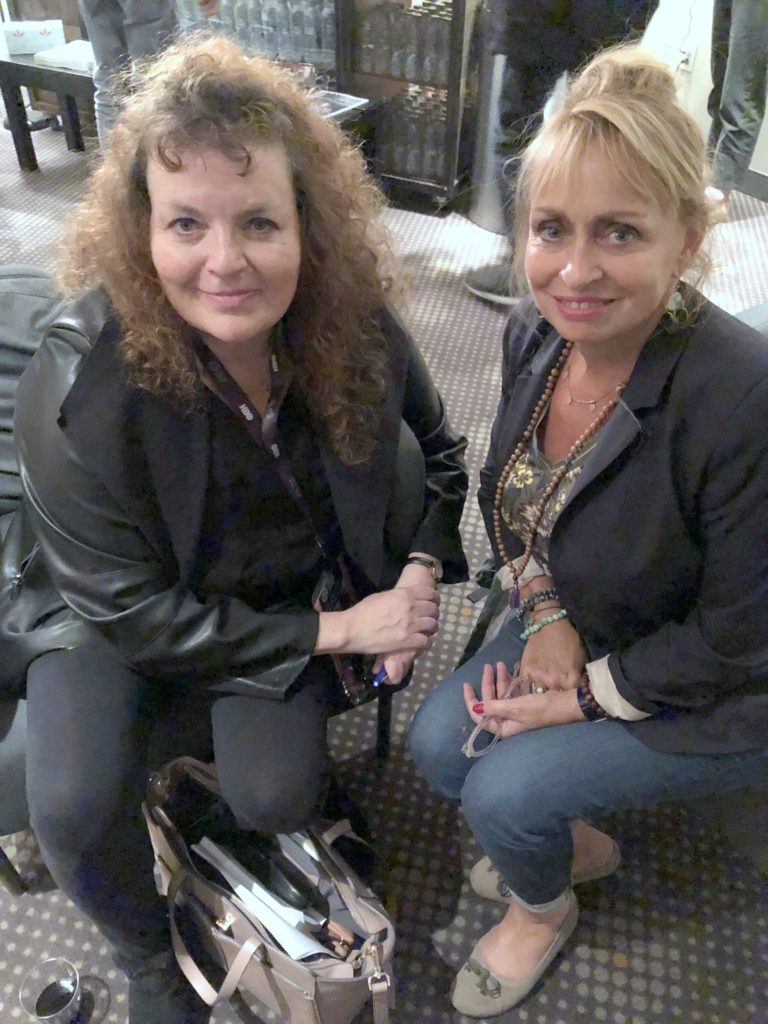
Click to tweet this interview to your friends and followers!
A personal note about Agnès Varda
Decades ago, when I started making short films in college, it was Agnès Varda’s work that influenced me most. Certainly, a groundbreaking female filmmaker caught my attention, but it was not just about her gender, it was about her art; her portrayal of characters in her narratives, the intimacy she conveyed in her documentaries, how she moved the camera, framed images, and captured moments of color and language—all these elements and more, deeply connected with my artistic sensibilities. Agnès made me believe I could express my voice as a filmmaker. And this was all before I even met her in person.
Over the last few years, I was very fortunate to interview and spend time with Agnès Varda at several events, including her 2017 photograph and installation exhibition at the Blum and Poe Gallery in Manhattan, at Film at Lincoln Center events, and the Locarno Film Festival in 2014 where she received the Pardo d’onore (the lifetime achievement award) during which time I was honored to be the only journalist invited to her masterclass for international students—a fortuitous event, witnessing firsthand her interactions with aspiring filmmakers, which is captured in Varda by Agnes. (There are three years-worth of masterclasses from Agnès Varda’s international travels included in this documentary.)
What always struck me during our conversations was her generosity of spirit, and specifically her pointed questions to me, which admittedly were sometimes intimidating because she had always been a personal inspiration as an artist and filmmaker.
Agnès would ask me: What did you think about the characters’ interactions and movement in the triptych in the installation?
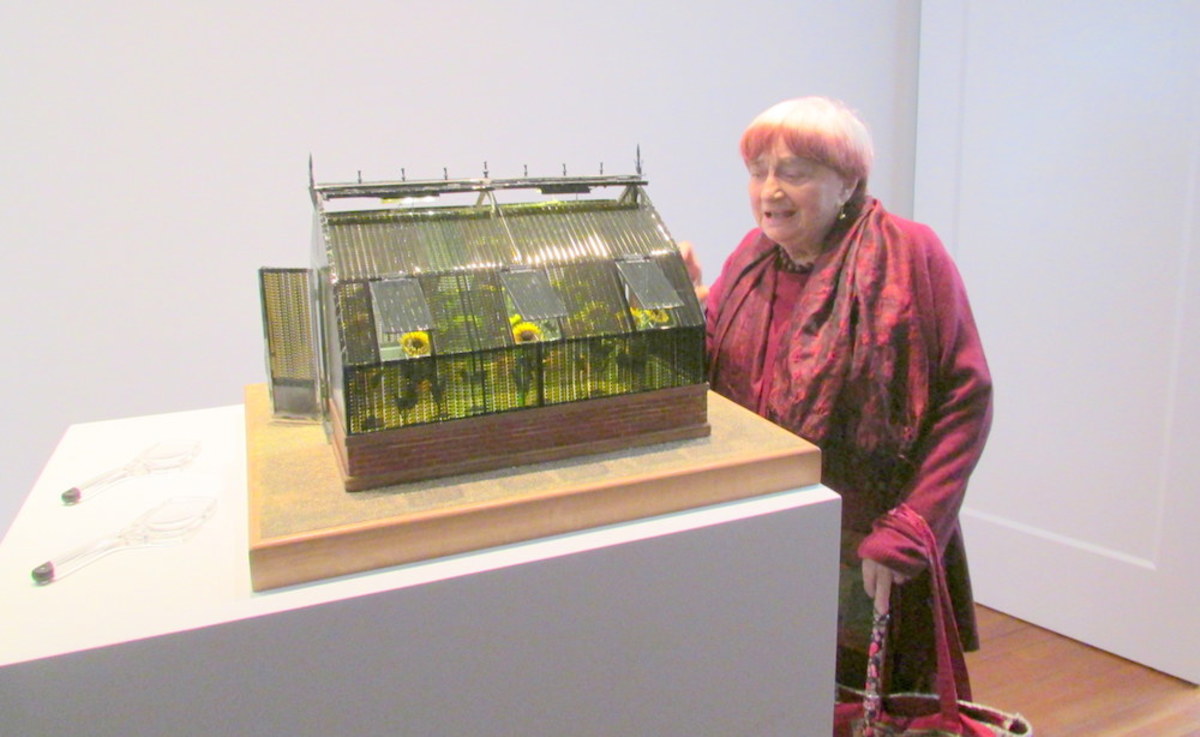
Why do you teach Vagabond and Cleo from 5 to 7, and what did you specifically discuss with your students? Where can I see your films? Excuse me?! That gave me pause; no other filmmaker I had interviewed over the years asked me questions about my work, nor was I ever forthcoming about my own films. However, the prized interviewer pried it out of me. We talked about our respective challenges and experiences of making movies on low budgets, raising children while making films, and themes close to our heart in our past, present and future work.
I told Rosalie that the last time I spoke with Agnès one-on-one, she gave me the needed push to get back to making my own films. Rosalie smiled and nodded knowingly, “Agnès was always pushing women: “Go! Don’t be afraid. Just go and do it.”
I am forever grateful to Agnès.
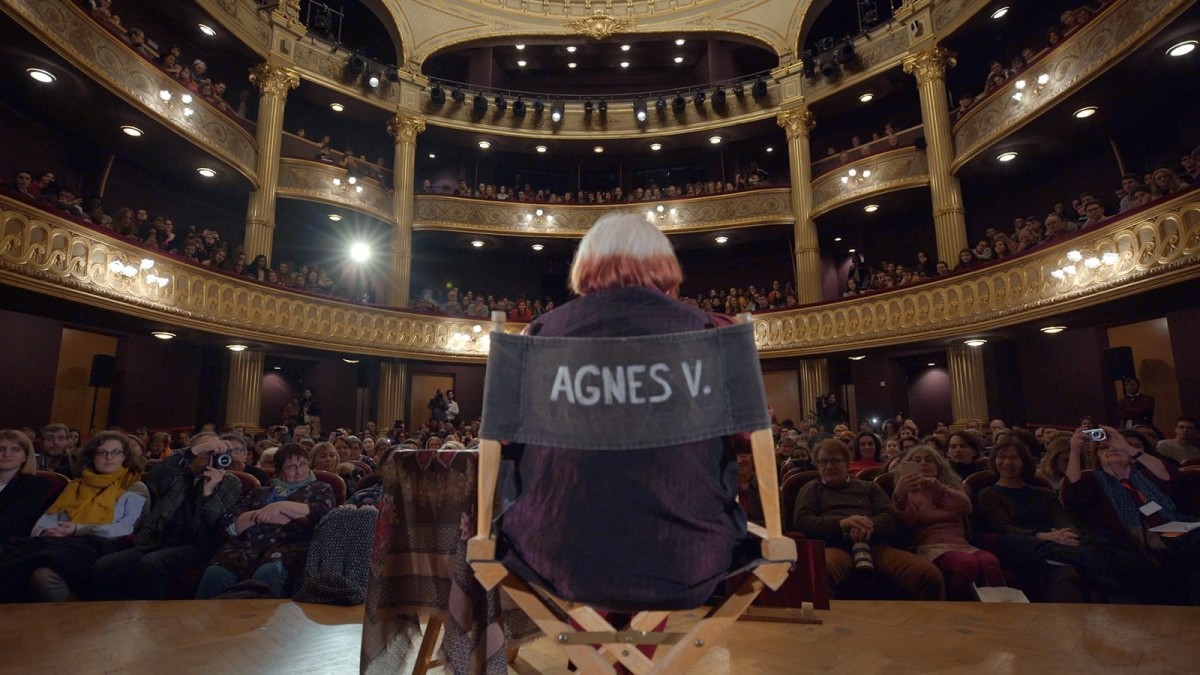
About the Documentary Varda by Agnès (Excerpts from Notes from the director Agnès Varda)
“In 1994, with a retro at the French Cinémathèque, I published a book entitled VARDA BY AGNÈS. 25 years later, the same title is given to my film made of moving images and words, with the same project: give keys about my body of work. I give my own keys, my thoughts, nothing pretentious, just keys.
The film is in two parts, two centuries. The 20th century from my first feature film LA POINTE COURTE in 1954 to the last one in 1996, ONE HUNDRED AND ONE NIGHTS. In between, I made documentaries, features, short and long. The second part starts in the 21st century, when the small digital cameras changed my approach to documentaries, from the GLEANERS AND I in 2000 to FACES PLACES, co-directed with JR in 2017. But during that time, I mostly created art installations, atypical triptychs, shacks of cinema and I kept making documentaries, such as THE BEACHES OF AGNÈS. In the middle of the two parts, there is a little reminder about my first life as a photographer. I’ve made a wide variety of films in my life.
So I need to tell you what led me to do this work for so many years. Three words are important to me: Inspiration, creation, sharing. INSPIRATION is why you make a film. The motivations, ideas, circumstances and happenstance that spark a desire and you set to work to make a film. CREATION is how you make the film. What means do you use? What structure? Alone or not alone? In colour or not in colour? Creation is a job. The third word is SHARING. You don’t make films to watch them alone, you make films to show them. An empty cinema: a filmmaker’s nightmare!”
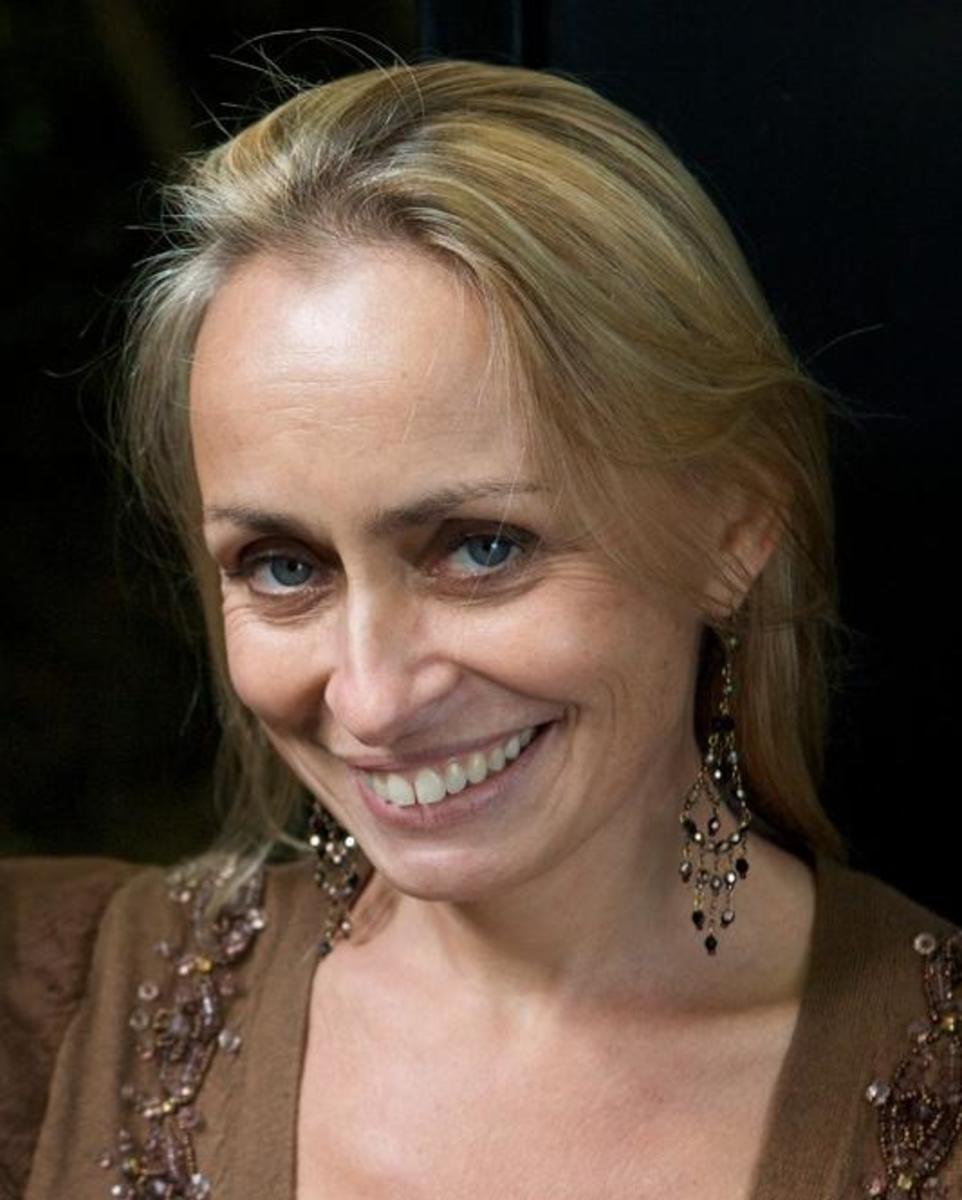
The Interview with Producer Rosalie Varda
During the 2019 New York Film Festival (which was dedicated to Agnès Varda) I had the great pleasure to sit down over a glass of wine and speak with producer Rosalie Varda about her new documentary Varda by Agnès, which was a Main Slate selection at the Festival.
A tour de force in her own right, Academy award nominee Rosalie Varda spent 25 years as a costume designer and fashion artist before she began to produce her mother’s films full time. She once commented, chuckling: “At the age of 20, I never would have said that at 50, I’d be working for my mother.”
Susan Kouguell: You and Agnès had a very special and unique collaboration. What was it like working with your mother?
Rosalie Varda: Our collaboration was very interesting because both of us wanted to share more than just being a mother and a daughter and speaking about holidays and children. I really started working with her in 2005 on an exhibition that we co-curated together. In that experience we saw that we were able to work together. I don’t have any ego, and I know where my place is. I loved the idea of helping her to be more free to do exactly her project with no concessions and to do it really as she wanted it, which means not taking care of the production, not taking care of the money, not taking care of how it should be, but just be involved in creation because her urgency was creating. She knew at one point she would not be there anymore. She still had new projects and it was like a race of doing everything, which means we did everything.
I realized when working on getting the archives together we had done so much in ten years between when she was 80 and 90-years old. We had maybe 30 exhibitions, four catalogues, and two films.
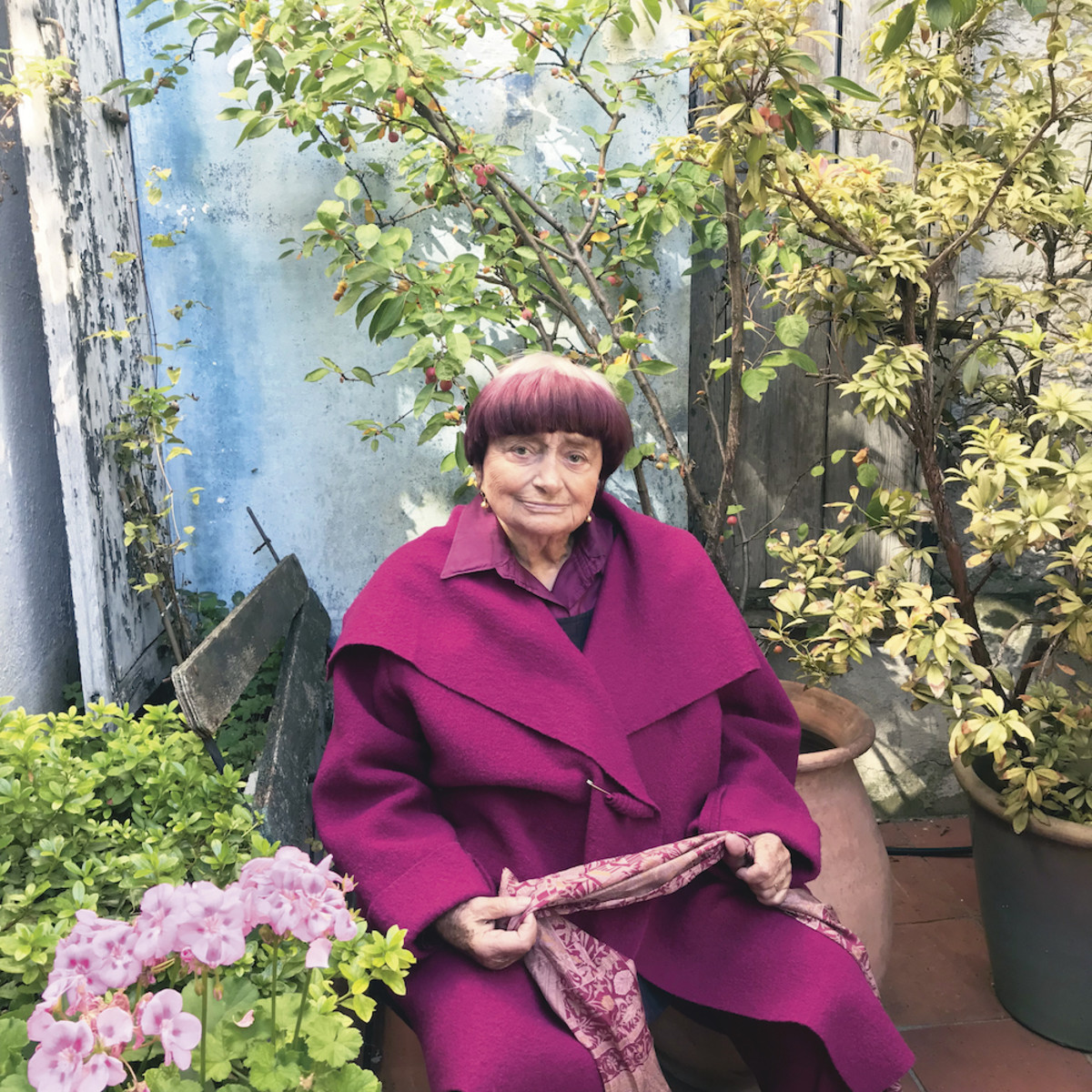
I traveled a lot with her over the last 10 years. We shared good times; she was very easy and open-minded. I would always say yes to what she wanted to do. I was not there to judge. My job was to produce and help her. It was very rewarding to be able to see her notes she did on the street or a train and then you do it, and see it, and then it’s done and the satisfaction of that is wonderful.
On the personal side, I was happy to share time with her, talking art, music, people, seeing journalists, having a glass of wine—you know, just life. Sharing a life of not just being a daughter coming to see your mother once a week; we were seeing each other every day, working together every day. We laughed a lot. We were very good partners. She would never put me down. She would always put me in the front. She was so generous. She would always say, ‘I wouldn’t be here without you doing everything for me.’ I wanted Agnès to be more in the light and have the younger generation know her.

SK: I understand you were the one who initially got in touch with the artist JR.
RV: Yes. Agnès didn’t know him and neither did I. I saw his books and I called him on the telephone and said. ‘I’m the daughter of Agnès Varda and I’m calling you because I’d like you to meet my mother.’ There was a blank (silence) on the telephone. Then he said, ‘Well, I know about your mother, I would love to meet her.’ We organized a meeting. And after their meeting, Agnès and JR said to me, ‘We’d like to do a little installation,’ and I said, ‘I think it’s going to be a short film’. They said, ‘No, we don’t want to do a short film.’ I thought, OK, they are going to do a film, but they don’t want to tell me right away, and I thought, I need to find money right away. I went to a French art dealer who’s a friend of mine who gave us the first money. With this money we did the first shooting. And then I produced the film.
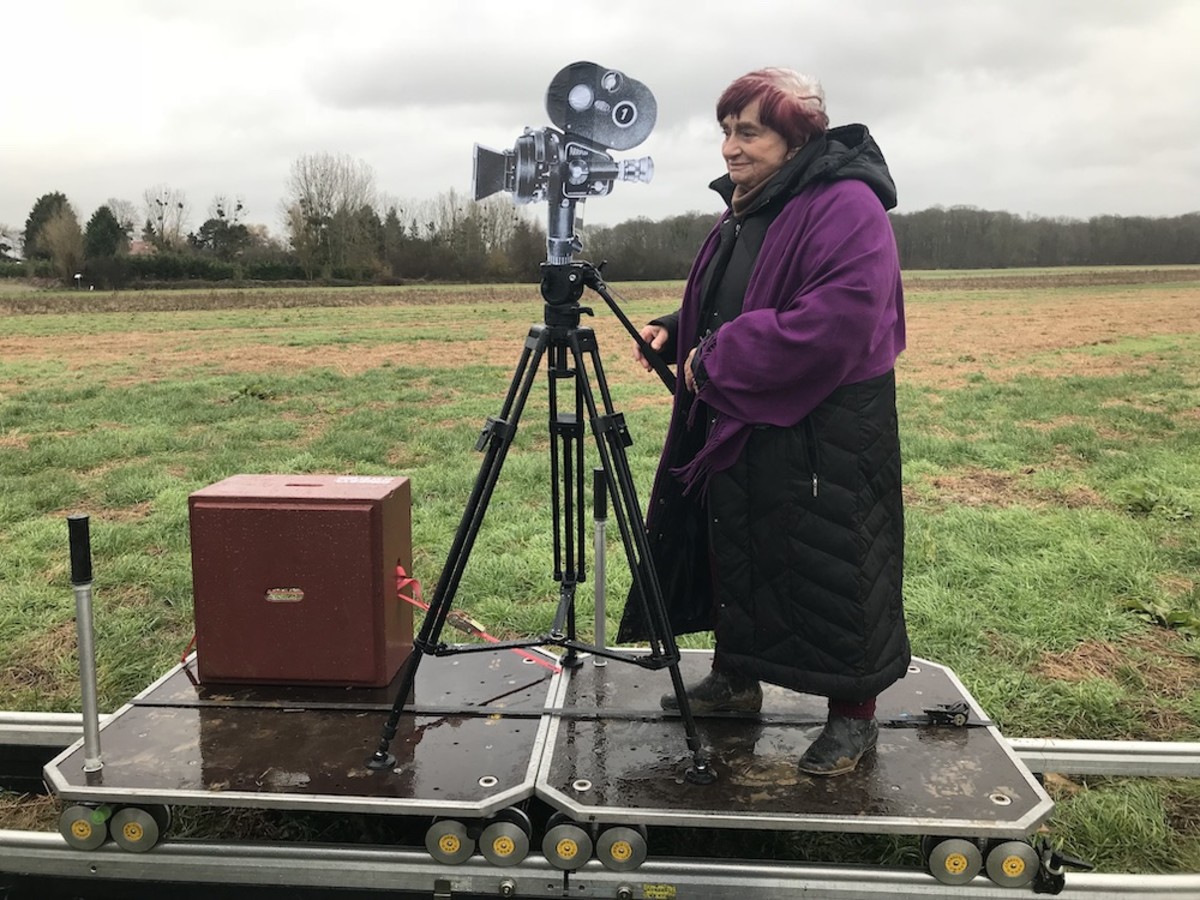
Varda by Agnès is both an introduction to her work for those not familiar with her vast body of narrative and documentaries, art installations, and photographs—and a love letter to and from Agnès.
SK: One constant in all her films is her humanity, a poignant trait that came across once again in Varda by Agnès.
RV: Yes, the film is a joyous legacy. This film to me is very important because it’s about legacy, and it’s about education on image. I think this film should be shown to students doing cinema; to discuss (elements of filmmaking), like frame, what is a frame, what is a photo, what is documentary.
SK: The film is a lesson for students without feeling like one, for example Agnès’s discussion about the tracking shots in Vagabond.
RV: Our project was not to be boring for people, it was a conversation about cinema, but it had to be cinema first. Not filming a masterclass. I’m happy you liked it.
SK: What’s next for you?
RV: A kind of documentary but I can’t talk about it yet. I’m also taking care of Agnès’s archives and I hope in the next few years to do an exhibit of her photographs and installations that will be more global. I want to be able to protect all her films; it’s what I do with my brother (Mathieu Demy) so I will continue to travel where people invite me and try to share a little bit of what Agnès had with her curiosity and her humanity — and always pushing people to do things. She would say, ‘Just stop talking about it, just do it.’ I will never forget that.
Agnès had a beautiful life; she has done so much. Agnès did a lot to the end.

The film opens November 22 in select cinemas in New York City, followed by a nationwide rollout.
A retrospective of Agnès Varda’s work at Film at Lincoln Center starts in December 2019.






























